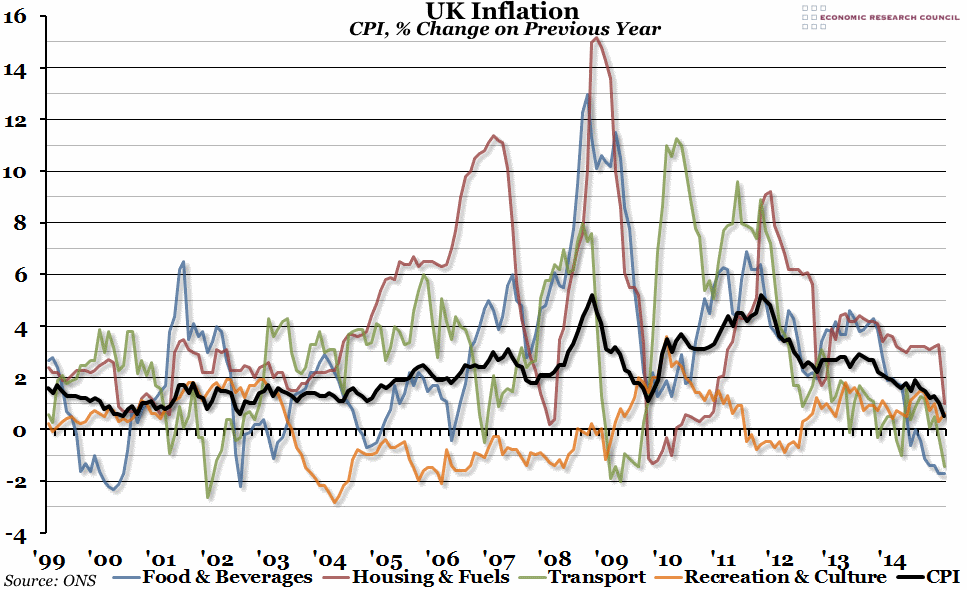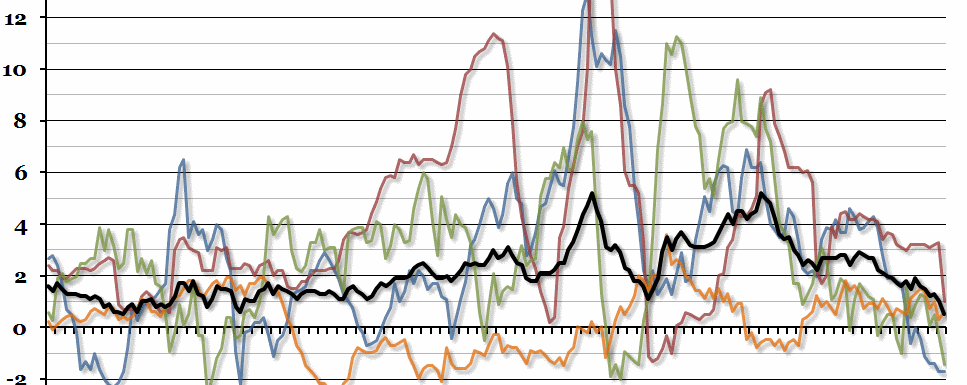
Summary
It was announced yesterday that overall inflation in the UK in December last year fell to just 0.5% – the joint lowest level on record (the other time it was this low was in May 2000). In today’s chart we take a look at what is driving down inflation.
What does the chart show?
The black line shows the monthly overall Consumer Price Index (CPI) measure of inflation, as a percentage change in prices over the previous 12 month period, for the last 15 years. The coloured lines show the four most important categories within the CPI (with the biggest weighting): food and non-alcoholic beverages in blue, housing, water and fuels in red, transport in green, and recreation and culture in orange. All of these are also measured as a percentage change over the previous year.
Why is the chart interesting?
A fall in inflation was expected at the end of last year, especially as the euro area fell into deflation, but the 0.5% figure was unexpectedly low. The general narrative surrounding the recent period of low inflation has been focussed on the low oil price (reflected in fuel prices for housing and transport) and cheap food prices due to a particularly good harvest in 2014. As you can see from this week’s chart, both of these have clearly had an impact; food and transport prices have been falling recently, dragging down the general level of inflation. During periods of higher inflation, these categories have often been the ones pushing the CPI up, and now they are having the opposite effect. The third category that peaked at over 15% at the end of 2008 is housing costs, and that also fell sharply towards the end of the year, largely driven by falling energy prices. This is the first time on record that all four categories have experienced an inflation rate of 1% or less in a single month.
However, since the driving factors behind most of these are based on a temporary abundance of supply (with the exception of culture and recreation, for which low price inflation is not unusual), as 2015 progresses we are very likely to see inflation start to increase again. Although inflation will probably decrease further in the first few months of this year, and we may even fall into deflation territory, there is little danger of a prolonged period of deflation.

